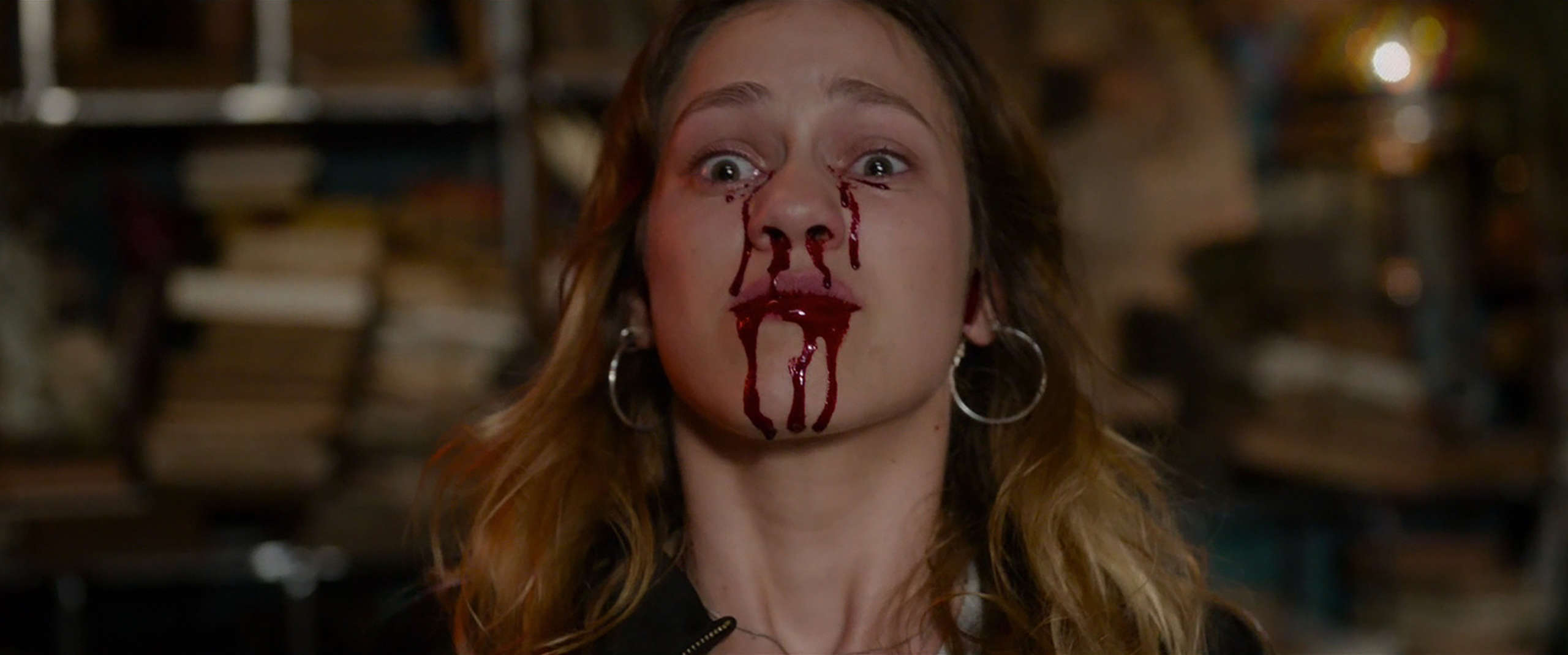
Having been introduced to the nihilistic brutalism of the New French Extremity through Julien Maury and Alexandre Bustillo’s Inside, I braced myself for an equally harrowing experience in their latest outing, Kandisha. But while their roots in French Extremity certainly imbue the film with a mean streak, Maury and Bustillo ultimately take the story down a different path in a tale that contrasts folk horror against a backdrop of modern day Paris.
Of course, fans of the film Candyman will note that this clash of the pastoral and the urban is certainly nothing new, and the film even tips its hat to the the influence of Bernard Rose’s 1992 splatterfest with hints at conjuring a demonic presence by announcing their name five times. But the similarities between the two films are only in the broadest of strokes.
Kandisha’s titular villain is a character from Moroccan folklore with the torso of a woman and feet of a goat who used her beauty to prey on men. The film builds on this mythology, explaining that Kandisha was once a woman killed by Portuguese conquerors, and that her spirit combined with a jinn to seek vengeance on the men who wronged her.
Enter Amélie (Mathilde Lamusse), Bintou (Suzy Bemba), and Morjana (Samarcande Saadi), three teenage friends living in a lower-income Parisian neighborhood who pass the time by smoking pot and making graffiti art in one of the area’s abandoned buildings. When Amélie is assaulted by her ex-boyfriend while walking home late one night, she calls upon Kandisha to punish him, but that punishment comes at a cost as in addition to her ex, Kandisha will reap six men dear to Amélie.

Kandisha’s subsequent killing spree transitions from folk horror into something more akin to supernatural slasher, with people being picked off in increasingly brutal methods that harken back to Maury and Baustillo’s days in French Extremity. While American slashers often attempt to incorporate an almost artistic sensibility to gore effects, makeup supervisor Oriane De Neve creates effects that border on hyperrealism. The camera lingers on the aftermath in a manner that forces us to try and process the horror of what we’re seeing, particularly within the context of characters who have proven to be quite likeable.
At the center of this chaos are wonderful performances from Lamusse, Bemba, and Saadi. Their relationship feels playfully antagonistic as they banter, bicker, and even fight the way we all did with our friends at that age, but it’s clear that they also genuinely care for one another. Also interesting is the relationship between Amélie and her younger brother Antoine (Felix Glaux-Delporto), as the film eschews the usual sibling bickering even as Amélie lashes out in teenage rebellion at her parents. With her brother, she’s kind and even vulnerable in ways we don’t often see on screen.
The girls seem to have lived beyond their years in certain aspects, navigating the lives of working class poor in ways that have left them jaded and resigned. Wwhen faced with Kandisha we’re reminded that these are just kids who are in way over their heads. In a moment of rage and trauma after being attacked, Amélie unleashes Kandisha almost by accident, and the girls desperately try and put the genie back in the bottle. One such attempt includes a reverse conjuring ritual that includes an animal sacrifice that will put off anyone who dislikes depictions of animal death on film. It’s upsetting not just because of how it unflinchingly shows the death, but because of the sense of desperation that motivates an act with no certainty for success.

As the girls turn to their local mosque for help, the story pivots into an exorcism narrative that avoids the well-trodden tropes of Roman Catholicism and instead explores Moroccan mythology in ways that not only builds the story, but also hints at the damage done to Moroccan culture through colonization. Maury and Bustillo also take the opportunity lean harder into the supernatural elements as they show the cloven-hoofed Kandisha in all her glory, with De Neve showcasing her versatility as she’s able to shift between the hyperrealist gore to Kandisha’s more fantastical design.
That kind of visual and thematic shift is at the heart of what makes Kandisha so interesting. With all of these elements incorporated into the story, it ends up being a very messy movie, but that messiness seems deliberate. Amélie, Suzy, and Morjana are left on their own to handle horrors both supernatural and mundane, be it an assault at the hands of a former lover or a rampaging vengeance demon wiping out the men in their lives. The swath of destruction wrought by Kandisha can’t be contained by one subgenre any more than it can be contained by the film’s young protagonists, and the consequences of her wrath leave one hell of an impression.





